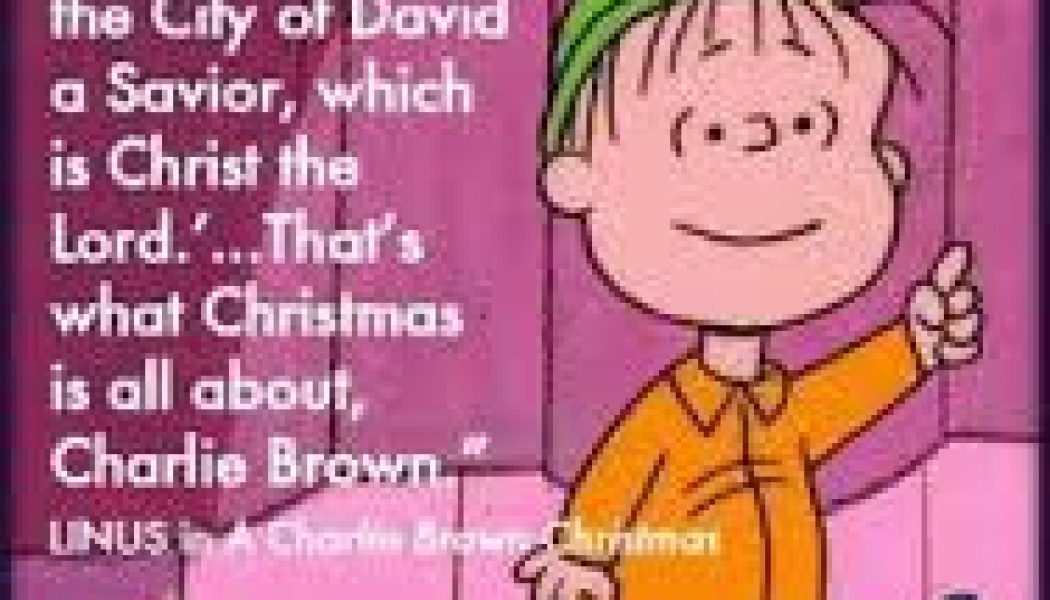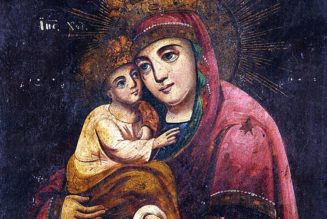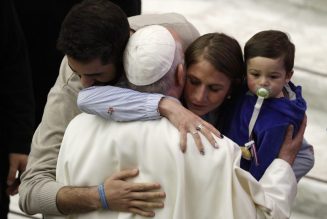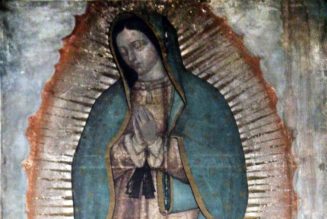 The Christmas Solemnity has distinct readings for four separate
The Christmas Solemnity has distinct readings for four separatemasses: Vigil, Midnight, Dawn, and
Day. They stay the same from year to year, so below are my annual comments, only lightly revised. Merry Christmas!
Mass
Zion’s sake I will not be silent,
for Jerusalem’s sake I will not be quiet,
until her vindication shines forth like the dawn
and her victory like a burning torch.
Nations shall behold your vindication,
and all the kings your glory;
you shall be called by a new name
pronounced by the mouth of the LORD.
You shall be a glorious crown in the hand of the LORD,
a royal diadem held by your God.
No more shall people call you “Forsaken,”
or your land “Desolate,”
but you shall be called “My Delight,”
and your land “Espoused.”
For the LORD delights in you
and makes your land his spouse.
As a young man marries a virgin,
your Builder shall marry you;
and as a bridegroom rejoices in his bride
so shall your God rejoice in you.
been reading from Isaiah all the way through Advent and now reach a
particularly dramatic and beautiful oracle.
was the capital city of the nation of Israel, the city of the Temple, and
mystically the New Eden. Israelites
considered it the navel of the universe, the center of the earth (see Gregory
Beale, The Temple and the Church’s
Mission, IVP 2002), and in Isaiah it becomes the heart and embodiment of
God’s people. Jerusalem is more than a
city, it is a mystical reality. The
Apostles and New Testament authors understand Jerusalem to be the Church, the
bride of Christ (see Hebrews 12:22-24; Rev. 21–22).
“nations shall behold your vindication, and kings your glory,” we see a
mystical reference to the growth of the Church throughout the world, and her
conversion of many nations and kings into her fold. “You shall be called by a
new name”—and so the people of God acquired a new name, called after the name
of the Messiah, Jesus Christ. The image
of a crown or diadem is used elsewhere in Scripture of the relationship of a
wife to a husband: she is his crown (Prov 4:9; 12:4; 1 Cor 11:7). Here, the new Jerusalem is the crown of the
LORD God, her spouse.
of the passage employs heavy nuptial imagery to describe the resumption of the
marriage relationship between the LORD and his people.
essential that we recognize that, in the Old Testament, marriage was primarily
a covenant (that is, a legal kinship) relationship between a man and woman (see
Gordon Hugenberger, Marriage as a
Covenant, VTSup 52; Brill, 1994). So
this imagery of the resumption of marital relationship bespeaks covenant renewal. This passage is speaking of a new covenant
between God and his people, which, like marriage, will involve bodily
union. Thus we see a fulfillment in Luke
22:20 and the establishment of the Eucharist:
“This is my body given for you …. This cup is the New Covenant in my
blood.”
nuptial prophecies in Isaiah and other prophets are employed by the Church just
before or at Christmas because in the Incarnation we see the “wedding” of human
and divine nature. When the Second
Person of the Trinity takes on the flesh of a human being, he “marries” our
humanity. Forever after we are united to
a God in a one-flesh union through the Jesus the Christ.
a double entendre in the phrase “your builder shall marry you.” In Hebrew,
“builder” and “sons” have the same consonants.
Different English translations adopt one option or the other: the NIV
and NAB opt for “Builder”; whereas the KJV-RSV tradition opts for “sons”. In my view, the ambiguity is intentional and
both meanings are significant. “Your
builder shall marry you” means: God your Creator will wed your nature. This calls to mind the image of Eve, who was
literally “built” (Heb. banah) by God
from the rib of Adam (Gen 2:22). Eve is
a type of the Temple and of the Church.
“Your sons shall marry you” means: the young men of the Church shall
espouse themselves to her, most dramatically by taking on apostolic celibacy,
in which they have no other spouse but the people of God. Every faithful priest is a “son” of the Church
who has “married” her.
(2a) For ever I will sing the goodness
of the Lord.
I have made a covenant with my chosen
one,
I have sworn to David my servant:
Forever will I confirm your posterity
and establish your throne for all generations.
R. For ever I will sing the goodness of the Lord.
Blessed the people who know the joyful shout;
in the light of your countenance, O LORD, they walk.
At your name they rejoice all the day,
and through your justice they are exalted.
R. For ever I will sing the goodness of the Lord.
He shall say of me, “You are my father,
my God, the rock, my savior.”
Forever I will maintain my kindness toward him,
and my covenant with him stands firm.
R. For ever I will sing the goodness of the Lord.
description and praise of the covenant of David in all the Psalter. The readings for masses of Christmas place a
heavy emphasis on the fulfillment of the promises God made to David. This covenant seemed to have been abandoned
by God from 587 BC on, when the last son of David to rule on the throne was
deposed and taken into exile. But Jesus
of Nazareth is the descendant of David who rules over the nations forever. It does seem remarkable, even from a human
perspective, that here 2,600 years after the last son of David visibly ruled on
the throne in Jerusalem, there are over 2 billion people in the world who claim
some kind of allegiance to David’s ancestor Jesus. God’s promises to David have been fulfilled,
despite all impediments to the contrary, so in this psalm we praise God for his
“goodness.” The Hebrew word translated
“goodness” here is “hesed,” which
means more precisely “covenant faithfulness.” It is usually translated “mercy,” but it is important to understand the root of biblical mercy in God’s covenant with us. God’s mercy is his faithfulness to his
covenant. In other words, God has sworn
to us a covenant, and according to that covenant he shows mercy toward us, even
though we are unfaithful to our covenant obligations toward him.
say of me, “You are my father,
my God, the rock, my savior.”
covenant established a familial relationship.
In the case of God and the Davidic king, it was a father-son
relationship. Yet there is a prophetic
sense to this verse: the heir of the covenant of David, Jesus son of Joseph, is
going to be able to say of God, “My Father!” in a more profound sense than any
previous heir. Jesus will invite us to
share in the father-son relationship he himself enjoys with God.
reached Antioch in Pisidia and entered the synagogue,
he stood up, motioned with his hand, and said,
“Fellow Israelites and you others who are God-fearing, listen.
The God of this people Israel chose our ancestors
and exalted the people during their sojourn in the
land of Egypt.
With uplifted arm he led them out of it.
Then he removed Saul and raised up David as king;
of him he testified,
‘I have found David, son of Jesse, a man after my own heart;
he will carry out my every wish.’
From this man’s descendants God, according to his promise,
has brought to Israel a savior, Jesus.
John heralded his coming by proclaiming a baptism of repentance
to all the people of Israel;
and as John was completing his course, he would say,
‘What do you suppose that I am? I am not he.
Behold, one is coming after me;
I am not worthy to unfasten the sandals of his feet.’”
phrase from this reading is in the middle: From
this man’s (David’s) descendants God, according to his promise, has brought to
Israel a savior, Jesus. So, much
like Psalm 89, this reading, too, emphasizes the fulfillment of God’s promises
to David in Jesus.
Church employs this second reading from Acts, because in it Paul succinctly
articulates salvation history leading up to Jesus: the Exodus and Mosaic
covenant; the conquest of the land and the Davidic covenant; the fulfillment of
the Davidic covenant announced by John the Baptist. John the Baptist has dominated the season of
Advent, as we often meditated on him in his role as forerunner and herald of
the coming of Jesus.
of the genealogy of Jesus Christ,
the son of David, the son of Abraham.
Abraham became the father of Isaac,
Isaac the father of Jacob,
Jacob the father of Judah and his brothers.
Judah became the father of Perez and Zerah,
whose mother was Tamar.
Perez became the father of Hezron,
Hezron the father of Ram,
Ram the father of Amminadab.
Amminadab became the father of Nahshon,
Nahshon the father of Salmon,
Salmon the father of Boaz,
whose mother was Rahab.
Boaz became the father of Obed,
whose mother was Ruth.
Obed became the father of Jesse,
Jesse the father of David the king.
David became the father of Solomon,
whose mother had been the wife of Uriah.
Solomon became the father of Rehoboam,
Rehoboam the father of Abijah,
Abijah the father of Asaph.
Asaph became the father of Jehoshaphat,
Jehoshaphat the father of Joram,
Joram the father of Uzziah.
Uzziah became the father of Jotham,
Jotham the father of Ahaz,
Ahaz the father of Hezekiah.
Hezekiah became the father of Manasseh,
Manasseh the father of Amos,
Amos the father of Josiah.
Josiah became the father of Jechoniah and his brothers
at the time of the Babylonian exile.
After the Babylonian exile,
Jechoniah became the father of Shealtiel,
Shealtiel the father of Zerubbabel,
Zerubbabel the father of Abiud.
Abiud became the father of Eliakim,
Eliakim the father of Azor,
Azor the father of Zadok.
Zadok became the father of Achim,
Achim the father of Eliud,
Eliud the father of Eleazar.
Eleazar became the father of Matthan,
Matthan the father of Jacob,
Jacob the father of Joseph, the husband of Mary.
Of her was born Jesus who is called the Christ.
Thus the total number of generations
from Abraham to David
is fourteen generations;
from David to the Babylonian exile,
fourteen generations;
from the Babylonian exile to the Christ,
fourteen generations.
Now this is how the birth of Jesus Christ came about.
When his mother Mary was betrothed to Joseph,
but before they lived together,
she was found with child through the Holy Spirit.
Joseph her husband, since he was a righteous man,
yet unwilling to expose her to shame,
decided to divorce her quietly.
Such was his intention when, behold,
the angel of the Lord appeared to him in a dream and said,
“Joseph, son of David,
do not be afraid to take Mary your wife into your home.
For it is through the Holy Spirit
that this child has been conceived in her.
She will bear a son and you are to name him Jesus,
because he will save his people from their sins.”
All this took place to fulfill
what the Lord had said through the prophet:
Behold, the virgin shall conceive and
bear a son,
and they shall name him Emmanuel,
which means “God is with us.”
When Joseph awoke,
he did as the angel of the Lord had commanded him
and took his wife into his home.
He had no relations with her until she bore a son,
and he named him Jesus.
more here that I can adequately cover at this time. Hopefully everyone will read the full reading
rather than the shorter option, which skips the genealogy. The genealogy is one of the most interesting
aspects of this reading, so it would be a shame to skip it.
of the Genealogy of Jesus Christ, the son of David, the son of Abraham.” In
this way, Matthew associates Jesus with the fulfillment of promises made to
three great patriarchs: Adam, David, and Abraham.
Jesus to Adam, because the only other occurrence of this phrase in Scripture is
in Genesis 5:1, which reads “This is the Book of the Genealogy of Adam.” In this way, Matthew presents us with Jesus
as a New Adam, a new father and founder of the human race, a new sinless man
and firstborn son of God the father; a prophet, priest and king of the cosmos.
of Abraham, Matthew indicates that Jesus is not merely a descendant of these men, but the particular descendant through whom the covenant promises made to
them will be fulfilled. All Jews were
sons of Abraham (Matt 3:9), and probably everyone in Nazareth was a descendant
of the House of David (see Bargil Pixner, Paths
of the Messiah, Ignatius 2010). But
Jesus was the seed. To Abraham God promised “through your seed (i.e. descendant) all the nations
of the earth will be blessed,” (Gen 22:18), and to David he promised “I will
raise up your seed after you, who
shall come forth from your body, and I will establish his kingdom. He shall build a house for my name, and I
will establish the throne of his kingdom forever” (2 Sam 7:12-13).
genealogy. Though today we tend to
regard genealogies as boring, they were of great importance in Jesus’ day, when
controversy surrounded both the kingship and high priesthood, since neither the
king (Herod) or the high priests (descendants of the Maccabees) had the correct
genealogies to serve in their offices.
Herod, in particular, was only half Jewish and had no connection to the
line of David, although he made a claim to have Davidic blood (which absolutely
no one believed). This is one of the
reasons Herod was so paranoid about threats to his reign (cf. Matt 2:13-18): he
knew that the populace did not consider him legitimate.
sets of fourteen, since fourteen is the numerical number of David’s name
(D-V-D) in Hebrew (D is the fourth letter and V is the sixth letter of the
Hebrew alphabet). Matthew is using
literary artistry to emphasize the Davidic descent of Jesus.
Rahab, Ruth, and Bathsheba.
and Bathsheba was married to a Gentile.
All of them had checkered personal histories: Tamar seduced her father-in-law
Judah (Gen 38), Rahab was a Canaanite harlot (Josh 1), Ruth attempted to seduce
Boaz (Ruth 3), and Bathsheba was apparently forced into adultery with
David. All of them were ancestors of
Solomon, the greatest king of the Israelite tradition.
David who will be criticized for socializing with Gentiles and prostitutes, and
who will inaugurate a kingdom which welcomes sinners and all ethnic groups into
its membership. Indeed, the inclusion of
the Gentiles and sinners into God’s covenant has been foreshadowed already in
the Old Testament. Matthew is also
probably contrasting the checkered ancestresses of Solomon, the greatest King
of Israel and type of the Messiah, with the immaculate purity of the Blessed Virgin. “One greater than Solomon is here” (Matt
12:42). Later, Jesus will be visited by
wise men from the East when he is still an infant, outdoing Solomon who was not
visited by wise men from the East until he was at the height of his career (1
Kings 4:29-34).
to establish Jesus’ legal right to
the throne more than his biological descent.
I say that because, at the end of the genealogy, Matthew makes clear
that there was no biological relationship between St. Joseph and Jesus. Nonetheless, Jesus was Joseph’s legal son and
heir to the throne. This was common
procedure in the ancient world: for example, Augustus Caesar was Julius
Caesar’s legal son (by adoption) but biological nephew. Nonetheless, Roman genealogies list Augustus
as the son of Julius. In my view, the
biological genealogy of Jesus is given in Luke 3 (through Mary’s
father/Joseph’s father-in-law Heli [=St. Joachim of tradition]).
available on my CD “The Genesis of Jesus,” available here: http://bit.ly/1OaBpm5 )
“Annunciation to St. Joseph.” St. Joseph
is known in tradition as the “silent one,” because none of his words are
recorded in Scripture. He seems always
to respond to God in silent obedience.
The brief words of this Gospel quickly recount what in fact must have
been a difficulty and emotional time for St. Joseph, and a trial of his
faith. There was the shock of learning
of Mary’s pregnancy, the confusion over its meaning and the implications for
their relationship, the struggle over how to respond and what action to take,
the heart-breaking decision to seek a quiet divorce, the surprise of divine
revelation in a dream, the struggle of faith over whether to trust the dream or
dismiss it as his imagination, etc. We
overlook the interior struggle that St. Joseph underwent in his role as husband
of Mary and foster father of Jesus. So
much in salvation history depended on his quiet fidelity! He sets an example for so many of us whose
contributions to the Church are going to be overshadowed by others with greater
gifts, reminding us to remain faithful, because our quiet roles are essential
even if they go unheralded. To every
person reading this who is laboring quietly to form your children, your
students, your parishioners; who is unobtrusively witnessing to your friends
and co-workers; who prays daily for the conversion of your loved ones and the
world, I say: look to Joseph, the model of quiet faithfulness! St. Joseph, pray for us!
people who walked in darkness
have seen a great light;
upon those who dwelt in the land of gloom
a light has shone.
You have brought them abundant joy
and great rejoicing,
as they rejoice before you as at the harvest,
as people make merry when dividing spoils.
For the yoke that burdened them,
the pole on their shoulder,
and the rod of their taskmaster
you have smashed, as on the day of Midian.
For every boot that tramped in battle,
every cloak rolled in blood,
will be burned as fuel for flames.
For a child is born to us, a son is given us;
upon his shoulder dominion rests.
They name him Wonder-Counselor, God-Hero,
Father-Forever, Prince of Peace.
His dominion is vast
and forever peaceful,
from David’s throne, and over his kingdom,
which he confirms and sustains
by judgment and justice,
both now and forever.
The zeal of the LORD of hosts will do this!
“people who walked in darkness” is a
reference to the northern tribes of Israel whose traditional tribal territory
was around the Sea of Galilee. This was
the first part of Israel to be destroyed by foreign enemies (the Assyrians c.
722 BC). Yet it would be the first part
of Israel to behold the beginning of the restoration of God’s people (when
Jesus began his public ministry in Galilee).
“child” and a “son.”
tradition, immortalized in Handel’s Messiah:
called:
Counselor, Mighty God,
Father, Prince of Peace.”
person. “Wonderful Counselor” and
“Prince of Peace” are titles of Solomon, indicating that this “son” will stand
in Solomon’s place. “Mighty God” and
“Everlasting Father” are divine titles, indicating that this “son” will be more
than a mere human being. Isaiah 9 is
prophesying a divine man on the throne of David—an event that seemed remote and
beyond all expectation in the 700s BC, when the northern tribes of Israel (the
people living in the “land of gloom”) were being decimated by the invasion of
the Assyrian empire. Nonetheless, it
came to be.
The grace of God has appeared, saving all
and training us to reject godless ways and worldly desires
and to live temperately, justly, and devoutly in this age,
as we await the blessed hope,
the appearance of the glory of our great God
and savior Jesus Christ,
who gave himself for us to deliver us from all lawlessness
and to cleanse for himself a people as his own,
eager to do what is good.
to the explicit belief in the divinity of Christ, as St. Paul writes to Titus:
anti-Christian allegation popular among revisionist historians, Gnostics, and
Christian heretics through the ages—namely, that the divinity of Christ was
some innovation of the Council of Nicaea.
These Readings remind us that the divinity of Christ was spoken by the
Prophets (Isaiah) and affirmed by the Apostles (Paul). St. Paul is confirming the prophecy of
Isaiah, affirming the truth that we have been given a human “child” whose
“name” is “Mighty God.”
from Luke’s Gospel (famously quoted by Linus in the immortal Charlie Brown
Christmas Special, a scene the TV executives wanted cut, but Schulz refused!):
days a decree went out from Caesar Augustus
that the whole world should be enrolled.
This was the first enrollment,
when Quirinius was governor of Syria.
So all went to be enrolled, each to his own town.
And Joseph too went up from Galilee from the town of Nazareth
to Judea, to the city of David that is called Bethlehem,
because he was of the house and family of David,
to be enrolled with Mary, his betrothed, who was with child.
While they were there,
the time came for her to have her child,
and she gave birth to her firstborn son.
She wrapped him in swaddling clothes and laid him in a manger,
because there was no room for them in the inn.
Now there were shepherds in that region living in the fields
and keeping the night watch over their flock.
The angel of the Lord appeared to them
and the glory of the Lord shone around them,
and they were struck with great fear.
The angel said to them,
“Do not be afraid;
for behold, I proclaim to you good news of great joy
that will be for all the people.
For today in the city of David
a savior has been born for you who is Christ and Lord.
And this will be a sign for you:
you will find an infant wrapped in swaddling clothes
and lying in a manger.”
And suddenly there was a multitude of the heavenly host with the angel,
praising God and saying:
“Glory to God in the highest
and on earth peace to those on whom his favor rests.”
all the references to Davidic covenant fulfillment: Bethlehem, David’s
birthplace; Joseph “of the house and lineage of David”; the presence of
shepherds, who remind us of David the Shepherd.
secular history (Caesar Augustus … Quirinius, etc.). He does not intend to record myths and
fables, but real human events. As John
also says, that “which we have heard, which we have seen with our eyes, which
we have looked upon and touched with our hands … we proclaim to you” (1 John
1:1). Disbelieve if you will, but Luke
and John intend to record history.
well-known historical issue with the dating of Quirinius, who according to some
historical records seems not yet to have been governor of Syria at the time of
Jesus birth. But the Greek of this
passage can possibly be rendered, “This was the census prior to Quirinius being
governor of Syria,” in which case the chronological problem is solved (so F.F.
Bruce, The New Testament Documents: Are
They Reliable? http://amzn.to/22q0EqB). There are other possible solutions (see Hahn
and Mitch, Ignatius Catholic Study Bible,
excursus ad loc.).
literally “House of Bread.” Thus it is
appropriate that the “Bread of Life” should be born in the “House of Bread” and
laid in a feeding trough (a “manger” from “mangé,” “to eat”). We will feed on Him in this Mass.
LORD proclaims
to the ends of the earth:
say to daughter Zion,
your savior comes!
Here is his reward with him,
his recompense before him.
They shall be called the holy people,
the redeemed of the LORD,
and you shall be called “Frequented,”
a city that is not forsaken.
virtually a continuation of the First Reading from the Vigil Mass (Isa 62:1-5),
and to understand its purpose, we should read that passage first and ponder its
relationship with this one:
Zion’s sake I will not be silent,
for Jerusalem’s sake I will not be quiet,
until her vindication shines forth like the dawn
and her victory like a burning torch.
Nations shall behold your vindication,
and all the kings your glory;
you shall be called by a new name
pronounced by the mouth of the LORD.
You shall be a glorious crown in the hand of the LORD,
a royal diadem held by your God.
No more shall people call you “Forsaken,”
or your land “Desolate,”
but you shall be called “My Delight,”
and your land “Espoused.”
For the LORD delights in you
and makes your land his spouse.
As a young man marries a virgin,
your Builder shall marry you;
and as a bridegroom rejoices in his bride
so shall your God rejoice in you.
been reading from Isaiah all the way through Advent and now reach a
particularly dramatic and beautiful oracle.
was the capital city of the nation of Israel, the city of the Temple, and
mystically the New Eden. Israelites
considered it the navel of the universe, the center of the earth, and in Isaiah
it becomes the heart and embodiment of God’s people. Jerusalem is more than a city, it is a
mystical reality. The Apostles and New
Testament authors understand Jerusalem to be the Church, the bride of Christ
(see Hebrews 12:22-24; Rev. 21–22).
“nations shall behold your vindication, and kings your glory,” we see a
mystical reference to the growth of the Church throughout the world, and her
conversion of many nations and kings into her fold. “You shall be called by a
new name”—and so the people of God acquired a new name, called after the name
of the Messiah, Jesus Christ. The image
of a crown or diadem is used elsewhere in Scripture of the relationship of a
wife to a husband: she is his crown.
Here, the new Jerusalem is the crown of the LORD God, her spouse.
of the passage employs heavy nuptial imagery to describe the resumption of the
marriage relationship between the LORD and his people.
essential that we recognize that, in the Old Testament, marriage was primarily
a covenant (that is, a legal kinship) relationship between a man and
woman. So this imagery of the resumption
of marital relationship bespeaks covenant renewal. This passage is speaking of a new covenant
between God and his people, which, like marriage, will involve bodily
union. Thus we see a fulfillment in Luke
22 and the establishment of the Eucharist: “This is my body given for you ….
This cup is the New Covenant in my blood.”
nuptial prophecies in Isaiah and other prophets are employed by the Church just
before or at Christmas because in the Incarnation we see the “wedding” of human
and divine nature. When the Second
Person of the Trinity takes on the flesh of a human being, he “marries” our
humanity. Forever after we are united to
a God in a one-flesh union through the Jesus the Christ.
a double entendre in the phrase “your builder shall marry you.” In Hebrew,
“builder” and “sons” have the same consonants.
Different English translations adopt one option or the other. In my view, the ambiguity is intentional and
both meanings are significant.” “Your
builder shall marry you”: God your Creator will wed your nature. This calls to mind the image of Eve, who was
literally “built” (Heb. banah) by God
from the rib of Adam. Eve is a type of
the Temple and of the Church. “Your sons
shall marry you”: the young men of the Church shall espouse themselves to her,
most dramatically by taking on apostolic celibacy, in which they have no other
spouse but the people of God. Every
faithful priest is a “son” of the Church who has “married” her.
Dawn on Christmas, we move on to a further elaboration on these themes in our
First Reading:
LORD proclaims
to the ends of the earth:
say to daughter Zion,
your savior comes!
Here is his reward with him,
his recompense before him.
They shall be called the holy people,
the redeemed of the LORD,
and you shall be called “Frequented,”
a city that is not forsaken.
“daughter Zion”—an image which bespeaks the virgin daughters of the king who
were of marriageable age. The Hebrew is
literally “your salvation comes” (not “your savior,” though the meaning is
close): yish’êkh from the same root that
gives us y’shu’a, “salvation,”
rendered in Greek, iesus, “Jesus.”
“redeemed of the Lord” is g’ûlê yhwh,
from the verb ga’al, “to
redeem.” In the Old Testament, if one
got in trouble of some kind (captured, or sold into slavery), one’s go’êl or “kinsman-redeemer,” that is,
one’s nearest male kinsman of means, was supposed to come to the rescue. We see this in the Book of Ruth, where Bo’az
(whose name means “In him is strength”) is the go’êl (“redeemer”) of Ruth and Naomi. Jesus is our
Bo’az, the one in whom is our strength.
He is both redeemer, bridegroom, and king, come to wed his nature to our
own.
When the kindness and generous love
of God our savior appeared,
not because of any righteous deeds we had done
but because of his mercy,
He saved us through the bath of rebirth
and renewal by the Holy Spirit,
whom he richly poured out on us
through Jesus Christ our savior,
so that we might be justified by his grace
and become heirs in hope of eternal life.
Paul’s words here: “kindness,” “generous love,” “mercy”—are Greek equivalents
of Hebrew terms like hesed, emunnah, tôv, associated with God’s faithfulness
to his covenant. As we celebrate the birth of Christ, St. Paul reminds us
that we participate(d) in that birth
by being ourselves reborn through
baptism, so that we share in Jesus’ genealogy (see the Gospel for the Vigil
Mass), and like him become heirs of David, but more importantly, “heirs” of
God.
the angels went away from them to heaven,
the shepherds said to one another,
“Let us go, then, to Bethlehem
to see this thing that has taken place,
which the Lord has made known to us.”
So they went in haste and found Mary and Joseph,
and the infant lying in the manger.
When they saw this,
they made known the message
that had been told them about this child.
All who heard it were amazed
by what had been told them by the shepherds.
And Mary kept all these things,
reflecting on them in her heart.
Then the shepherds returned,
glorifying and praising God
for all they had heard and seen,
just as it had been told to them.
Gospel for the Midnight Mass. The
shepherds set a paradigm of evangelization: to them the Good News is
proclaimed; they come and experience it firsthand; they depart and share what
they “had heard and seen” to others. They do so with joy: “glorifying and praising
God.” The shepherds are model
evangelists. Why are we so often
ineffective evangelists? Because we
haven’t deeply experienced Jesus ourselves: “heard and seen”; or we lose our
joy in the face of the contradictions of this life and so cease to “glorify and
praise.”
on them in her heart,” serving as the Church’s model of contemplative prayer
and lectio divina. This phrase also probably indicates St.
Luke’s source for his accounts of the birth of Christ.
Reading (Is 52:7-10) and Psalm (Ps 98:1,
2-3, 3-4, 5-6) are doxologies giving thanks to God for his wonderful
deeds in creation and in salvation history.
Then we get two of the most theologically “heavy” texts in the entire
New Testament:
and sisters:
In times past, God spoke in partial and various ways
to our ancestors through the prophets;
in these last days, he has spoken to us through the Son,
whom he made heir of all things
and through whom he created the universe,
who is the refulgence of his glory,
the very imprint of his being,
and who sustains all things by his mighty word.
When he had accomplished purification from sins,
he took his seat at the right hand of the Majesty on high,
as far superior to the angels
as the name he has inherited is more excellent than theirs.
For to which of the angels did God ever say:
You are myson; this day I have begotten you? (Ps
2:7)
Or again:
I will be a father to him, and he
shall be a son to me? (2 Sam 7:14)
And again, when he leads the firstborn
into the world, he says:
Let all the angels of God worship
him.
until you realize that the author (traditionally St. Paul, but disputed) is
arguing that Jesus Christ is superior to all the mediators of the Old (that is,
Mosaic) Covenant. In the Jewish
tradition, God gave the covenant at Sinai first to angels, who transmitted it
to Moses, who entrusted its administration to the Levitical priesthood for the
rest of time. This explains why Hebrews
1-2 shows Jesus superior to the angels, Hebrews 3-4 demonstrates his
superiority to Moses, and Hebrews 5-10 shows his superiority to the Levitical
High Priest.
is both King and High Priest, like Melchizedek of old (Genesis 14). (Melchizedek, by the way, was widely held to
be none other than Shem son of Noah, as the Targums attest.)
indicated already in the first verses:
accomplished purification from sins, {this is a
priestly act}
at the right hand of the Majesty on high, {a royal
privilege}
the angels {the first mediators of the Old Covenant}
inherited is more excellent than theirs.
Jesus role in creation (“through whom he created the universe”) with Jesus’
role as heir of the Davidic covenant.
The author quotes two of the most important Davidic covenant texts (Ps
2:7 and 2 Sam 7:14) about the divine sonship of the heir of David in order to
show Jesus’ superiority to the angels.
There is a theme throughout Scripture that God’s promises and covenant
to creation (Genesis 1–2) are as firm as his promises and covenant to David (2
Sam 7:11-17). We see this in Jeremiah
33, where the covenant with Creation and with David are explicitly correlated,
and in Psalm 89, which juxtaposes doxology to God for his glory in creation
with doxology for his fidelity to David.
The point is: in Jesus, natural
history and salvation history
flow together. Benedict XVI makes this
point in the first chapters of his post-synodal exhortation on Sacred
Scripture, Verbum Domini.
beginning was the Word,
and the Word was with God,
and the Word was God.
He was in the beginning with God.
All things came to be through him,
and without him nothing came to be.
What came to be through him was life,
and this life was the light of the human race;
the light shines in the darkness,
and the darkness has not overcome it.
A man named John was sent from God.
He came for testimony, to testify to the light,
so that all might believe through him.
He was not the light,
but came to testify to the light.
The true light, which enlightens everyone, was coming into the world.
He was in the world,
and the world came to be through him,
but the world did not know him.
He came to what was his own,
but his own people did not accept him.
But to those who did accept him
he gave power to become children of God,
to those who believe in his name,
who were born not by natural generation
nor by human choice nor by a man’s decision
but of God.
And the Word became flesh
and made his dwelling among us,
and we saw his glory,
the glory as of the Father’s only Son,
full of grace and truth.
John testified to him and cried out, saying,
“This was he of whom I said,
‘The one who is coming after me ranks ahead of me
because he existed before me.’”
From his fullness we have all received,
grace in place of grace,
because while the law was given through Moses,
grace and truth came through Jesus Christ.
No one has ever seen God.
The only Son, God, who is at the Father’s side,
has revealed him.
Reading. What can we say about John
1? There are not words enough or
time! The whole faith and the meaning of
life are all encapsulated here.
“the Beginning” and “Light and Darkness,” John is evoking Genesis 1 and the
first day of creation, insisting that with Jesus Christ, the world has
experienced a New Creation, a change as fundamental as the initial transition from
non-being to existence. Note how both
Matthew (“the Book of the Genealogy,” cf. Gen 5:1) and John (“In the beginning
was the Word,” cf. Gen 1:1) begin their Gospels with allusions to Genesis.
of Adam, the first man and son of God (Luke 3:38). But this “second Creation”, which really
predates the first Creation, brings us a better Son of God, who existed prior
to the first son of God. This Son of God
is better than the first one. The first
one lost us the rights to divine sonship (filiation), but this second one has
regained them for us:
this Christmas. That little baby from
God made it possible for us to be little babies from God (as in the Second
Reading from the Dawn Mass), made it possible for us to be born anew, afresh,
again (John 3:5-8), innocent, like at the dawn of creation.
the Word became flesh
and made his dwelling among us …
corresponds to the noun tabernacle used
in the Old Testament for the tent-dwelling of God constructed by Moses. Jesus is being likened to the Tabernacle: he
is the sanctuary, our place of worship that accompanies us on our journey
through the desert of this life, sustained by bread from heaven
(manna-Eucharist) and water from the rock (baptism).
Ancient Israel was the Feast of Tabernacles, the celebration of God’s
sanctuary. In Jesus’ day, it was
arguably the most impressive liturgical celebration in Jerusalem, and some of
the most important events in the Gospel of John take place during this feast
(see John 7–9), which was marked by rituals involving light and water (see John
7:37-39; 8:12). The Christian feast that
corresponds to the Jewish Feast of Tabernacles is, in fact, Christmas, because
Christmas celebrates the creation of the New Sanctuary (cf. John 2:21), the
Body of Christ, in whom God dwells, just as the Presence of God filled the
Tabernacle of old (Exodus 40:34-38).
****
Looking for a last-minute gift for that hard-to-please person on your list? Everyone loves a pilgrimage! Send them to Israel with me and Fr. Mark Bentz, June 14-23, 2020. Sign up is here.
<!– /* Font Definitions */
@font-face {font-family:"MS 明朝"; mso-font-charset:128; mso-generic-font-family:roman; mso-font-pitch:fixed; mso-font-signature:-536870145 1791491579 134217746 0 131231 0;}
@font-face {font-family:"Cambria Math"; panose-1:2 4 5 3 5 4 6 3 2 4; mso-font-charset:1; mso-generic-font-family:roman; mso-font-format:other; mso-font-pitch:variable; mso-font-signature:0 0 0 0 0 0;}
@font-face {font-family:Cambria; panose-1:2 4 5 3 5 4 6 3 2 4; mso-font-charset:0; mso-generic-font-family:roman; mso-font-pitch:variable; mso-font-signature:-536870145 1073743103 0 0 415 0;} /* Style Definitions */
p.MsoNormal, li.MsoNormal, div.MsoNormal {mso-style-unhide:no; mso-style-qformat:yes; mso-style-parent:""; margin:0in; margin-bottom:.0001pt; mso-pagination:widow-orphan; font-size:12.0pt; font-family:"Cambria",serif; mso-ascii-font-family:Cambria; mso-ascii-theme-font:minor-latin; mso-fareast-font-family:"MS 明朝"; mso-fareast-theme-font:minor-fareast; mso-hansi-font-family:Cambria; mso-hansi-theme-font:minor-latin; mso-bidi-font-family:"Times New Roman"; mso-bidi-theme-font:minor-bidi;}
a:link, span.MsoHyperlink {mso-style-priority:99; color:blue; text-decoration:underline; text-underline:single;}
a:visited, span.MsoHyperlinkFollowed {mso-style-noshow:yes; mso-style-priority:99; color:purple; mso-themecolor:followedhyperlink; text-decoration:underline; text-underline:single;}
.MsoChpDefault {mso-style-type:export-only; mso-default-props:yes; font-family:"Cambria",serif; mso-ascii-font-family:Cambria; mso-ascii-theme-font:minor-latin; mso-fareast-font-family:"MS 明朝"; mso-fareast-theme-font:minor-fareast; mso-hansi-font-family:Cambria; mso-hansi-theme-font:minor-latin; mso-bidi-font-family:"Times New Roman"; mso-bidi-theme-font:minor-bidi;}
@page WordSection1 {size:8.5in 11.0in; margin:1.0in 1.25in 1.0in 1.25in; mso-header-margin:.5in; mso-footer-margin:.5in; mso-paper-source:0;}
div.WordSection1 {page:WordSection1;}
–>









